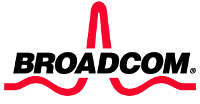Broadcom Chipsets Power DIRECTV Set-Top Box Roadmap
Tuesday, January 9th, 2007
Broadcom® Solutions Enable DIRECTV Launch of Basic Standard Definition through Advanced HDTV DVR Set-Top Box Platforms
LAS VEGAS — 2007 International CES — Broadcom Corporation (Nasdaq: BRCM), a global leader in semiconductors for wired and wireless communications, today announced that its semiconductor solutions for the satellite set-top box market are being used as the core technology in many DIRECTV high definition television (HDTV) and basic standard definition (SD) set-top boxes. Broadcom focused on meeting DIRECTV’s stringent qualification and performance metrics and succeeded in becoming the number one silicon provider in DIRECTV’s products.
Production versions of Broadcom® chips were provided to LG Electronics and Thomson Multimedia, enabling them to incorporate Broadcom solutions into set-top boxes for DIRECTV. As a result, DIRECTV became the first satellite provider to launch a set-top box that incorporates HDTV MPEG-4/AVC technology.
“Broadcom has established itself as a leader in the set-top box marketplace,” said Roger Lambert, Vice President of Set-Top Box Products, DIRECTV, Inc.. “Broadcom’s MPEG-4 as well as its 8PSK DVB-S2 products performed very well through our comprehensive testing and qualification procedures.”
“We are very pleased with the growth in our relationship with DIRECTV and its suppliers.” said Dan Marotta, Senior Vice President and General Manager of Broadcom’s Broadband Communications Group. “A complete team effort went into the production launch of these very complex technologies.”
Broadcom will be demonstrating its next generation HDTV and DVB-S2 set-top products at the International Consumer Electronics Show (CES) in Las Vegas, Nevada, Meeting Room #35778, South Hall 4 from January 8 through 11, 2007. As part of the demonstration at CES, Broadcom will perform live DIRECTV decoding on multiple platforms.
Broadcom is the first company to develop a DVB-S2 satellite receiver chip that integrates the demodulators and tuners into a single-chip design. Other silicon solutions require separate DVB-S2 tuners and demodulators, which significantly increase the number of components on the receiver design and result in increased bill of material costs as well as power consumption.
Latest News
- Barb to start reporting TV-set viewing of YouTube channels
- SAT FILM selects multi-DRM from CryptoGuard
- Qvest and ARABSAT to launch OTT streaming platform
- ArabyAds & LG Ad Solutions partner with TVekstra in Turkey
- Freeview NZ satellite TV service to move to Koreasat 6
- Comscore expands YouTube CTV measurement internationally
